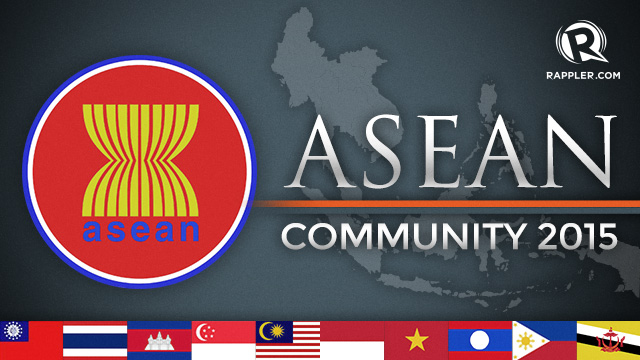SUMMARY
This is AI generated summarization, which may have errors. For context, always refer to the full article.

MANILA, Philippines – Is the Philippines ready for the upcoming ASEAN economic community?
Speakers at the “FT – First Metro Philippine Investment Summit” in Makati City on Monday, May 19, said the country was in the position to take advantage of opportunities when the region integrates into one economic bloc, but there were challenges to hurdle to realize its potential.
“The Philippines is well situated. In an integrated ASEAN, we’d be the youngest… the second largest in terms of population,” Finance Secretary Cesar Purisima said in his keynote speech at the summit sponsored by Financial Times and First Metro Investments Corporation.
Purisima said this human resource was one of the “upsides” for the country. “The positive demographic structure of the country is an advantage. By next year, more than 50% of our population will be in working age. They will be needing our human resource.”
In one of the panel discussions, Enrique Razon Jr., chairman and president of global port operator ICTSI, echoed Purisima’s point. He said the country must continue to “harness” population growth because it has helped keep the economy afloat.
“We make more babies than jobs,” he said jokingly.
Purisima said the challenge was how to make the labor force more competitive. “We need to educate, invest in our people.”
Winners, losers
Purisima cited tourism and trade as among the strengths of an integrated ASEAN.
He said ASEAN “as a single country” was bigger than China in electronics. “In fact, it’s the largest exporter of electronic components in the world.”
In terms of tourism, ASEAN had more foreign arrivals than France in 2013. “If we’re one, with a common visa policy, the potential is really there.”
Ayala Corporation chairman and CEO Jaime Augusto Zobel de Ayala said he, too, was a “strong advocate of an open market.”
He said regional integration would make the Philippines more relevant in a global context and make it a “partner of choice.”
“It will bring opportunities for all of us. It’s an exciting time,” he told attendees of the summit.
However, Zobel said the country must address constraints in some sectors, such as energy, transport and infrastructure.
Razon said the same thing. “What we need is an airport. Even if we bring in tourists, how are they gonna come in? Until we have a proper airport with at least 2 runways, it will be difficult to increase tourist arrivals.”
Meanwhile, areas that need a lot of work include manufacturing and agriculture, which, if improved, would be major drivers of the economy.
Socioeconomic Planning Secretary Arsenio Balisacan raised the need for more infrastructure in rural areas to increase productivity and jobs. He also said that investments in manufacturing were vital because this sector has the potential to generate quality employment.
“Integration makes us push harder to make sure that this time, we don’t miss out.”
Asian Development Bank vice president Stephen Groff said there would be winners and losers in the integration “that’s why we need to have safety nets in place for those industries and sectors that may experience challenges.” (READ: Winners and losers in ASEAN 2015) – Rappler.com
Add a comment
How does this make you feel?
There are no comments yet. Add your comment to start the conversation.